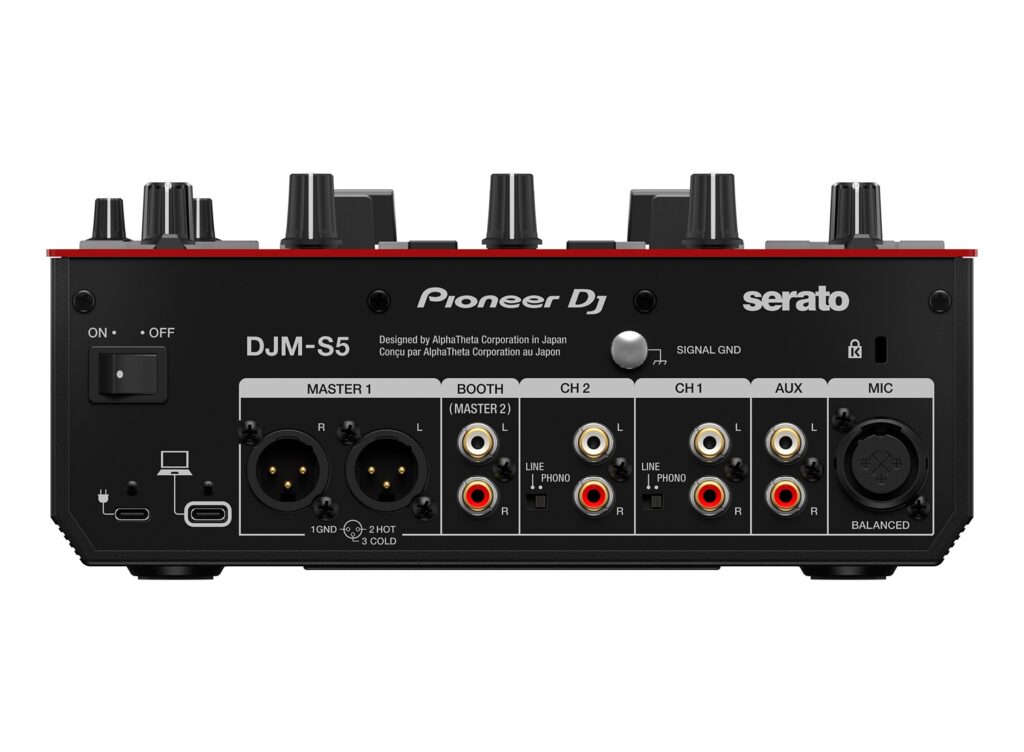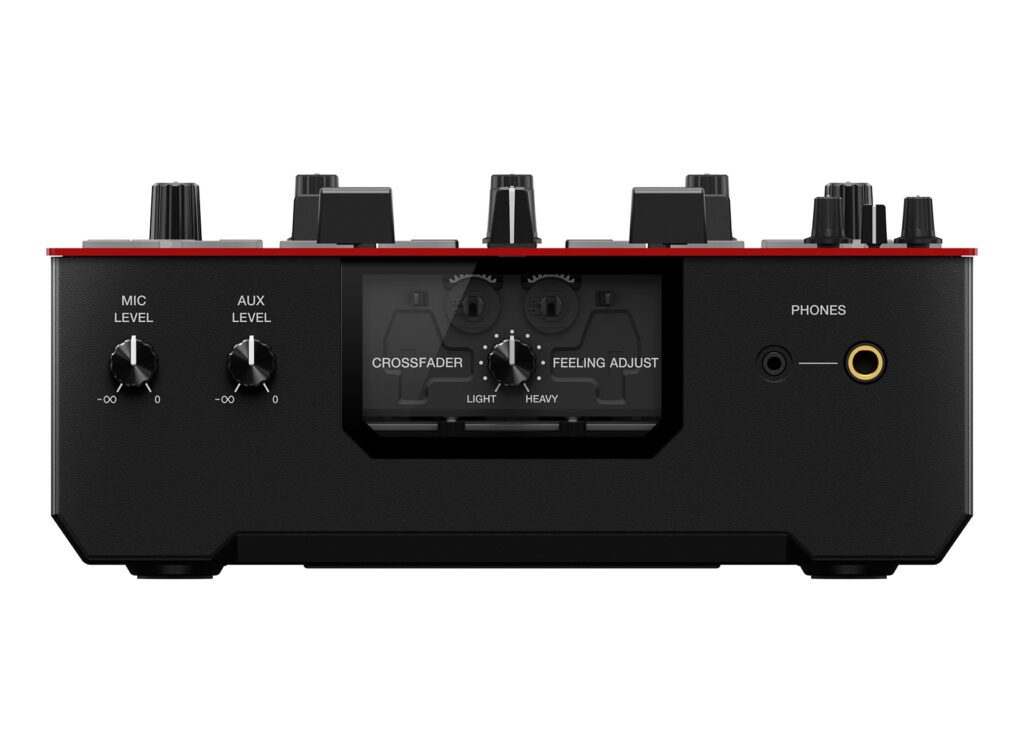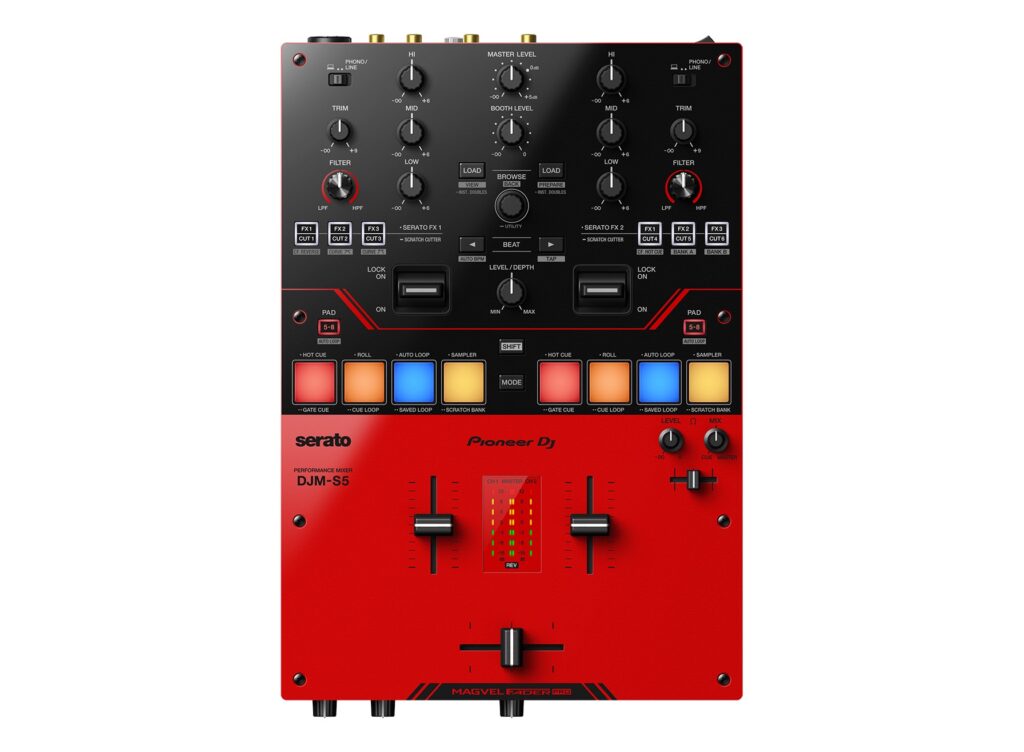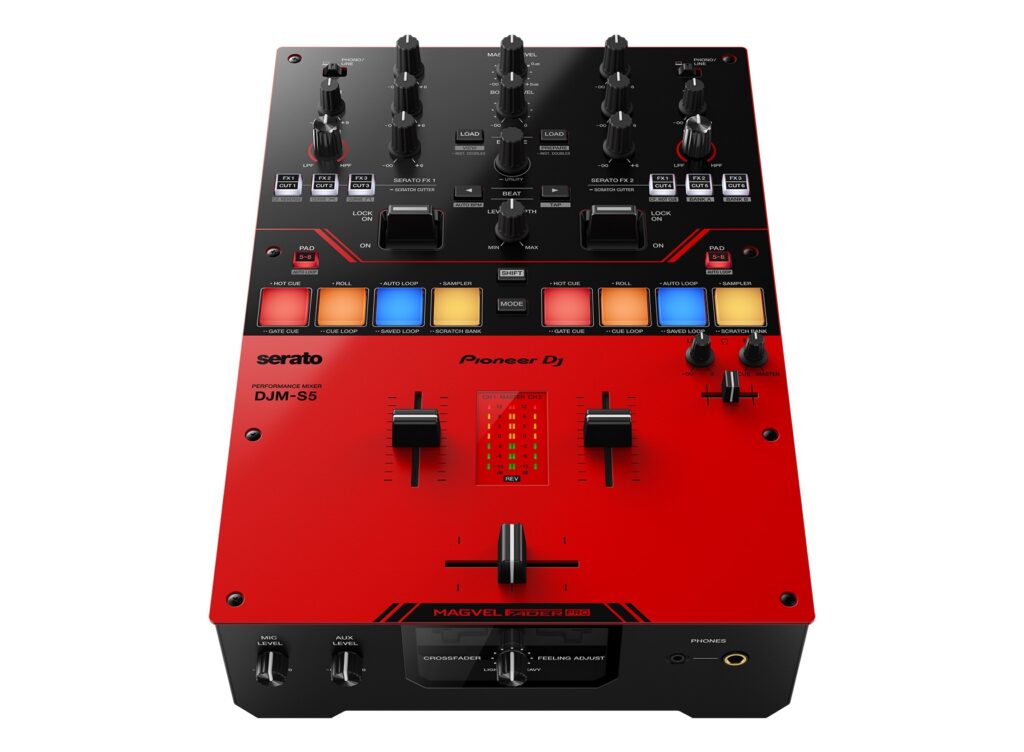Pioneer’s latest scratch mixer promises pro features at a more affordable price. Greg Scarth puts it to the test.

Pioneer’s new DJM-S5 is the latest in a series of new models which have radically overhauled the brand’s line-up of scratch-focussed DJ mixers. Designed primarily for use with the Serato DJ software and a digital vinyl setup, the DJM-S models are specially aimed at turntablists and DJs who scratch and perform with pads and effects. As the most affordable of the new models, the S5 adopts many of the pro features of the flagship DJM-S11, but comes in at a much lower price. We already know that the S7 and S11 are excellent battle mixers, so the big question here is whether the S5 manages to match the performance and functionality of the high-end models at a more humble price point.
It’s immediately obvious that the S5 draws heavily on the flagship S11 and the slightly more simple DJM-S7. Physically, the S5 is only marginally smaller than the S7, which is reassuring as the format works well on the more expensive models, giving plenty of space around the controls and a good feel when performing (the S11 is larger mainly due to its screen). At just under £750, the S5 isn’t exactly a cheap mixer, but it’s still considered affordable as far as specialist DVS-focussed scratch mixers are concerned. In order to bring the price down to that point – substantially cheaper than the £1,300+ S7 and £1,800+ S11 – the feature set has been understandably reduced to an extent. Most notably, each channel has just four performance pads rather than eight, and access to some features such as Instant Doubles, auto loop and pad modes is hidden behind shift buttons rather than dedicated controls.

It’s worth noting that the S5 isn’t compatible with Pioneer’s Rekordbox software (which the S7 and S11 both are), but all three mixers are mainly intended for use with Serato. The S5 acts as a full hardware unlock of Serato DJ Pro and its features are heavily optimised for the software, from the Serato FX sections with their lockable effects paddles, through to the functionality of the performance pads. Setup is a simple case of hooking the mixer directly up to your laptop over USB-C, after which you’ll find that the S5 delivers the basics well, functioning as a high-quality audio interface and immediately feeling like a professional piece of equipment. The S5 uses the same Magvel Fader Pro crossfader found in Pioneer’s high-end scratch mixers, which gives a precise, durable feel when performing (a neat touch is the transparent plastic section on the front panel, giving you a view of the internal workings of the crossfader). It is worth mentioning that your only physical adjustment for the crossfader is the Feeling Adjust knob, allowing you to tweak its weight from light to heavy. Pressing the shift key, the Cut 1, Cut 2 and Cut 3 buttons of Channel 1 allow you to reverse the crossfader and/or choose between two different crossfader curves. If you need the added versatility of fully adjustable crossfader and channel fader curves, you’ll need to stump up the £600 extra for the DJM-S7.

The S5’s performance pads are one of the main areas where it’s obvious the mixer is a little more basic than Pioneer’s flagship models. The way they’re implemented has the potential to make or break the mixer, given how important they are to the overall experience. The somewhat plasticky pads themselves are clearly a little cheaper than the soft rubber pads of the high-end models, but still feel nice and responsive. The way the reduced controls work is effective if slightly more fiddly than the more expensive DJMs; holding down the Mode button (and shift key in some cases) allows you to select Hot Cues, Auto Loop and all the various pad modes. Is it as slick as the more extensive controls of the S7? No, but you still have access to most of the same options and it’s clear this is one of the areas where Pioneer have cut costs to bring the price down.

In terms of other features, there are no real surprises. The EQs are of the three-band -∞/+6 dB variety, each channel has its own dedicated low/high-pass filter control, and there’s also the option to switch between laptop output and a line/phono input for each channel. Serato FX are well implemented, with Pioneer’s excellent lockable paddles offering a solid, precise feel. Much the same as the performance pads, access to FX options is slightly fiddly but effective enough.

The DJM-S5 is slightly more basic than the significantly more expensive S7, but Pioneer have done an excellent job of refining the concept and bringing it down to a more affordable price. Compromises have been made in places, but overall the S5 still delivers most of the functionality of its more expensive stablemates. In theory, there is a cheaper option in the Pioneer range in the form of the old DJM-S3, but the S3 is a bit outdated at this point and doesn’t come close to the S5 in terms of functionality, meaning it’s not worth the small saving. Crucially, the DJM-S5 still feels like a professional mixer despite being more than £1,000 cheaper than the flagship S11. The S5 isn’t a cheap, entry-level model for beginners so much as a serious mixer for scratch DJs on a tight budget.
Greg Scarth
More info/buy